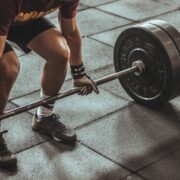
Effective Functional Rehab Exercises for Optimal Recovery
Functional rehab exercises play a crucial role in the recovery process for individuals who have experienced an injury or undergone surgery. These exercises focus on improving strength, flexibility, balance, and coordination, with the ultimate goal of restoring optimal functionality and quality of life. By targeting specific movements and activities that are essential for daily living, functional rehab exercises help individuals regain independence and return to their normal activities. In this article, we will explore the importance of functional rehab exercises in recovery and discuss the various types of exercises that can be incorporated into a rehabilitation program.
Key Takeaways
- Functional rehab exercises are crucial for recovery from injuries or surgeries.
- Different types of exercises, including stretching, strengthening, balance and coordination, and cardiovascular exercises, offer unique benefits for recovery.
- Stretching helps improve flexibility and range of motion, reducing the risk of future injuries.
- Strengthening exercises help rebuild muscle and improve overall function.
- Balance and coordination exercises can improve stability and prevent falls, while cardiovascular exercises promote overall fitness and health.
Understanding the Importance of Functional Rehab Exercises for Recovery
Functional rehab exercises are designed to mimic real-life movements and activities that individuals perform on a daily basis. Unlike traditional exercises that focus on isolated muscle groups, functional rehab exercises target multiple muscle groups simultaneously, allowing for a more comprehensive approach to rehabilitation. These exercises help individuals regain strength, flexibility, balance, and coordination, which are essential for performing everyday tasks such as walking, climbing stairs, lifting objects, and reaching overhead.
The importance of functional rehab exercises in recovery cannot be overstated. These exercises not only help individuals regain physical function but also improve overall quality of life. By focusing on movements that are relevant to daily activities, functional rehab exercises enable individuals to regain independence and perform tasks without assistance. This can have a significant impact on an individual’s mental well-being and self-confidence.
Types of Functional Rehab Exercises and Their Benefits
There are several types of functional rehab exercises that can be incorporated into a rehabilitation program. These include range of motion exercises, resistance exercises, balance exercises, and coordination exercises.
Range of motion exercises involve moving a joint through its full range of motion to improve flexibility and prevent stiffness. These exercises can be passive (assisted by a therapist or equipment) or active (performed by the individual). Range of motion exercises help improve joint mobility and prevent contractures, which can occur when a joint is not moved regularly.
Resistance exercises involve using weights, resistance bands, or body weight to strengthen muscles. These exercises help improve muscle strength and endurance, which are essential for performing daily activities. Resistance exercises can be tailored to target specific muscle groups and can be modified to accommodate different fitness levels.
Balance exercises focus on improving stability and preventing falls. These exercises can include standing on one leg, walking on uneven surfaces, or using balance boards or stability balls. Balance exercises help improve proprioception (awareness of body position) and strengthen the muscles that support balance.
Coordination exercises involve performing movements that require precise timing and sequencing. These exercises help improve motor control and coordination, which are essential for performing complex movements. Coordination exercises can include activities such as throwing and catching a ball, juggling, or performing dance routines.
The Role of Stretching in Functional Rehab Exercises
| Metrics | Description |
|---|---|
| Range of Motion | The degree of movement that a joint can achieve in different directions. |
| Flexibility | The ability of a muscle or group of muscles to lengthen passively through a range of motion. |
| Muscle Imbalances | When one muscle or group of muscles is stronger or tighter than its opposing muscle or group of muscles. |
| Injury Prevention | Stretching can help prevent injuries by improving flexibility and range of motion. |
| Posture | Stretching can improve posture by correcting muscle imbalances and increasing flexibility. |
| Performance | Stretching can improve athletic performance by increasing flexibility and range of motion. |
Stretching plays a crucial role in functional rehab exercises as it helps improve flexibility, prevent muscle imbalances, and reduce the risk of injury. There are several types of stretching exercises that can be incorporated into a rehabilitation program.
Static stretching involves holding a stretch for a prolonged period of time to lengthen the muscles and improve flexibility. This type of stretching is typically performed after a workout or physical activity when the muscles are warm. Static stretching helps improve range of motion and prevent muscle tightness.
Dynamic stretching involves moving through a full range of motion in a controlled manner to warm up the muscles and prepare them for physical activity. This type of stretching is typically performed before a workout or physical activity to increase blood flow to the muscles and improve mobility.
PNF (proprioceptive neuromuscular facilitation) stretching involves contracting and relaxing specific muscle groups while stretching to improve flexibility. This type of stretching is often performed with the assistance of a therapist or partner and can help improve range of motion and muscle strength.
The benefits of stretching exercises in functional rehab are numerous. Stretching helps improve flexibility, which is essential for performing daily activities and preventing muscle imbalances. It also helps reduce muscle soreness and stiffness, improve posture, and enhance overall athletic performance.
Strengthening Exercises for Optimal Recovery
Strengthening exercises are a key component of functional rehab as they help improve muscle strength, endurance, and power. These exercises target specific muscle groups and can be tailored to meet the individual’s needs and goals.
There are several types of strengthening exercises that can be incorporated into a rehabilitation program. These include resistance training, bodyweight exercises, and functional movements.
Resistance training involves using weights, resistance bands, or machines to provide resistance against the muscles. This type of training helps build muscle strength and size, improve bone density, and increase metabolism. Resistance training can be performed using free weights, weight machines, or resistance bands.
Bodyweight exercises involve using the individual’s own body weight as resistance to build strength. These exercises can include push-ups, squats, lunges, and planks. Bodyweight exercises are convenient as they can be performed anywhere without the need for equipment.
Functional movements involve performing exercises that mimic real-life movements and activities. These exercises target multiple muscle groups simultaneously and help improve overall functional strength. Functional movements can include squats, lunges, deadlifts, and overhead presses.
The benefits of strengthening exercises in functional rehab are significant. These exercises help improve muscle strength and endurance, which are essential for performing daily activities and preventing injuries. They also help increase bone density, improve posture, enhance athletic performance, and boost metabolism.
Balance and Coordination Exercises for Improved Functionality
Balance and coordination exercises are essential in functional rehab as they help improve stability, prevent falls, and enhance overall functionality. These exercises target the muscles that support balance and coordination and can be tailored to meet the individual’s needs and goals.
There are several types of balance and coordination exercises that can be incorporated into a rehabilitation program. These include standing exercises, walking exercises, and dynamic movements.
Standing exercises involve performing movements while standing on one leg or on an unstable surface. These exercises help improve proprioception and strengthen the muscles that support balance. Standing exercises can include single-leg stands, heel-to-toe walks, and standing on a balance board or stability ball.
Walking exercises involve performing movements that challenge balance and coordination while walking. These exercises can include walking on uneven surfaces, walking with eyes closed, or walking while performing upper body movements. Walking exercises help improve dynamic balance and coordination.
Dynamic movements involve performing complex movements that require precise timing and sequencing. These exercises help improve motor control and coordination, which are essential for performing daily activities. Dynamic movements can include throwing and catching a ball, juggling, or performing dance routines.
The benefits of balance and coordination exercises in functional rehab are significant. These exercises help improve stability, prevent falls, and enhance overall functionality. They also help improve proprioception, strengthen the muscles that support balance, and enhance motor control and coordination.
Cardiovascular Exercises for Overall Fitness and Health
Cardiovascular exercises are an important component of functional rehab as they help improve cardiovascular fitness, increase endurance, and promote overall health and well-being. These exercises target the heart and lungs and can be tailored to meet the individual’s needs and goals.
There are several types of cardiovascular exercises that can be incorporated into a rehabilitation program. These include aerobic exercises, interval training, and low-impact activities.
Aerobic exercises involve performing continuous rhythmic movements that elevate the heart rate and increase breathing rate. These exercises can include walking, jogging, cycling, swimming, or using cardio machines such as treadmills or ellipticals. Aerobic exercises help improve cardiovascular fitness, increase endurance, and burn calories.
Interval training involves alternating between periods of high-intensity exercise and periods of rest or low-intensity exercise. This type of training helps improve cardiovascular fitness, increase metabolism, and burn calories. Interval training can be performed using any aerobic exercise and can be tailored to meet the individual’s fitness level.
Low-impact activities involve performing exercises that minimize stress on the joints and are suitable for individuals with joint pain or injuries. These activities can include swimming, water aerobics, cycling, or using low-impact cardio machines such as stationary bikes or ellipticals. Low-impact activities help improve cardiovascular fitness without putting excessive strain on the joints.
The benefits of cardiovascular exercises in functional rehab are numerous. These exercises help improve cardiovascular fitness, increase endurance, and promote overall health and well-being. They also help reduce the risk of chronic diseases such as heart disease, diabetes, and obesity.
Proper Form and Technique in Functional Rehab Exercises
Proper form and technique are essential in functional rehab exercises to ensure safety and maximize effectiveness. It is important to maintain proper alignment, engage the correct muscles, and perform movements with control and precision.
Maintaining proper form and technique helps prevent injuries and ensures that the targeted muscles are being properly engaged. It is important to listen to your body and avoid pushing through pain or discomfort. If you are unsure about proper form or technique, it is recommended to work with a physical therapist or qualified fitness professional who can provide guidance and support.
Here are some tips for maintaining proper form and technique in functional rehab exercises:
1. Start with a proper warm-up: Before starting any exercise, it is important to warm up the muscles and prepare them for physical activity. This can include performing dynamic stretches, light cardio exercises, or mobility drills.
2. Focus on alignment: Pay attention to your body alignment during exercises to ensure that you are maintaining proper posture. This includes keeping your spine neutral, shoulders relaxed, and core engaged.
3. Engage the correct muscles: Focus on engaging the muscles that are being targeted in each exercise. This can be achieved by maintaining proper alignment and using controlled movements.
4. Breathe properly: Remember to breathe throughout each exercise. Inhale during the eccentric phase (lengthening of the muscle) and exhale during the concentric phase (shortening of the muscle).
5. Use proper resistance: Choose a resistance level that challenges you without compromising form. It is important to start with lighter weights or resistance bands and gradually increase as your strength improves.
6. Take breaks when needed: Listen to your body and take breaks when needed. It is important to rest and recover between exercises or sets to prevent fatigue and reduce the risk of injury.
Progression and Modification of Exercises for Continued Improvement
Progression and modification are key components of functional rehab exercises to ensure continued improvement and prevent plateaus. As your strength, flexibility, balance, and coordination improve, it is important to challenge yourself by increasing the intensity or difficulty of the exercises.
Here are some tips for progressing and modifying exercises in functional rehab:
1. Increase resistance: Gradually increase the resistance level by using heavier weights, thicker resistance bands, or increasing the number of repetitions or sets.
2. Increase range of motion: Gradually increase the range of motion by performing exercises through a larger range or adding dynamic movements.
3. Add instability: Incorporate unstable surfaces such as balance boards, stability balls, or foam pads to challenge your balance and coordination.
4. Increase speed: Gradually increase the speed of movements to challenge your coordination and reaction time.
5. Incorporate plyometrics: Plyometric exercises involve explosive movements that help improve power and speed. These exercises can include jumping, hopping, or bounding movements.
6. Try new exercises: Incorporate new exercises or variations of exercises to keep your workouts challenging and interesting.
It is important to progress and modify exercises gradually to avoid overexertion or injury. If you are unsure about how to progress or modify exercises, it is recommended to work with a physical therapist or qualified fitness professional who can provide guidance and support.
Incorporating Functional Rehab Exercises into Daily Life
Incorporating functional rehab exercises into daily life is essential for long-term success and maintenance of physical function. By making these exercises a part of your daily routine, you can continue to improve strength, flexibility, balance, and coordination even after completing a formal rehabilitation program.
Here are some tips for incorporating functional rehab exercises into your daily life:
1. Set aside dedicated time: Schedule specific times during the day to perform your exercises. This can be in the morning, during lunch breaks, or in the evening.
2. Make it a habit: Consistency is key when it comes to incorporating exercises into your daily routine. Make it a habit by setting reminders, creating a workout schedule, or finding an accountability partner.
3. Break it up: If you find it difficult to set aside a dedicated block of time for exercise, try breaking it up into smaller sessions throughout the day. For example, you can perform a few exercises in the morning, during lunch breaks, and in the evening.
4. Be creative: Look for opportunities to incorporate exercises into your daily activities. For example, you can perform squats while brushing your teeth, do calf raises while waiting in line, or practice balance exercises while watching TV.
5. Find activities you enjoy: Incorporate activities that you enjoy into your exercise routine. This can include walking, swimming, dancing, gardening, or playing sports. By choosing activities that you enjoy, you are more likely to stick with them long-term.
6. Involve others: Exercise with friends or family members to make it more enjoyable and motivating. You can join group fitness classes, go for walks together, or participate in team sports.
Remember that every little bit counts when it comes to incorporating functional rehab exercises into your daily life. Even small movements and activities can have a significant impact on your overall physical function and well-being.
Working with a Physical Therapist for Effective Functional Rehab Exercises
Working with a physical therapist is highly recommended for individuals who are undergoing functional rehab exercises. A physical therapist is a trained healthcare professional who specializes in the evaluation, diagnosis, and treatment of musculoskeletal conditions and injuries.
A physical therapist can assess your specific needs and goals, develop a personalized rehabilitation program, and provide guidance and support throughout the recovery process. They can also monitor your progress, make adjustments to your program as needed, and ensure that you are performing exercises correctly and safely.
Here are some benefits of working with a physical therapist for functional rehab exercises:
1. Expert guidance: A physical therapist has the knowledge and expertise to develop a customized rehabilitation program that is tailored to your specific needs and goals. They can provide guidance on proper form and technique, recommend appropriate exercises, and ensure that you are progressing at a safe and effective pace.
2. Individualized care: A physical therapist can assess your unique strengths, weaknesses, and limitations and develop a program that addresses your specific needs. They can modify exercises as needed to accommodate any injuries or conditions you may have.
3. Hands-on treatment: In addition to prescribing exercises, a physical therapist can provide hands-on treatment such as manual therapy, joint mobilization, or soft tissue techniques to help relieve pain, improve mobility, and enhance overall function.
4. Motivation and support are crucial factors in achieving success. Without motivation, it can be difficult to stay focused and committed to reaching our goals. Motivation provides the drive and determination needed to overcome obstacles and persevere through challenges. Additionally, having a strong support system can greatly enhance our chances of success. Surrounding ourselves with people who believe in us and encourage us can provide the necessary encouragement and guidance to keep us on track. Whether it’s friends, family, mentors, or coaches, having a support system can make all the difference in our journey towards achieving our goals.
FAQs
What are functional rehabilitation exercises?
Functional rehabilitation exercises are a type of physical therapy that focuses on improving a person’s ability to perform everyday activities, such as walking, reaching, and bending. These exercises are designed to help individuals recover from injuries or illnesses that have affected their mobility and function.
What are the benefits of functional rehabilitation exercises?
Functional rehabilitation exercises can help improve strength, flexibility, balance, and coordination. They can also help reduce pain and improve overall physical function. These exercises can be tailored to meet the specific needs of each individual, making them an effective treatment option for a wide range of conditions.
Who can benefit from functional rehabilitation exercises?
Functional rehabilitation exercises can benefit anyone who has experienced a loss of mobility or function due to injury, illness, or surgery. They are commonly used to treat conditions such as arthritis, back pain, stroke, and sports injuries. These exercises can also be used to help prevent future injuries and improve overall physical fitness.
What types of exercises are included in functional rehabilitation?
Functional rehabilitation exercises can include a variety of activities, such as stretching, strength training, balance exercises, and cardiovascular conditioning. These exercises are designed to mimic everyday movements and activities, such as walking, lifting, and reaching. They can be performed using bodyweight, resistance bands, weights, or other equipment.
How long does it take to see results from functional rehabilitation exercises?
The length of time it takes to see results from functional rehabilitation exercises can vary depending on the individual and the condition being treated. In general, it may take several weeks or months of consistent exercise to see significant improvements in strength, flexibility, and function. However, many people report feeling better and experiencing less pain after just a few sessions of physical therapy.



















Thank you for your sharing. I am worried that I lack creative ideas. It is your article that makes me full of hope. Thank you. But, I have a question, can you help me?